

-
-
- 메일 공유
-
https://dev.stories.amorepacific.com/en/the-obvious-that-isnt-so-obvious-the-simple-that-isnt-so-simple
The “Obvious” That Isn't So Obvious; The “Simple” That Isn't So Simple

Part 4: The “Obvious” That Isn't So Obvious; The “Simple” That Isn't So Simple
Columnist
Shinhee Lee Amorepacific CSR Team

The term “simple” is not universally straightforward. It varies based on individual perspectives. Influences of gender, age, disability, or culture can render a situation not so simple for some. For instance, not everyone can perform a specific action “quickly and easily.” Expressions like “at a glance” or “listen intently” warrant consideration from the standpoint of those with disabilities or the elderly.
We will delve into “inclusive marketing” that leaves no one marginalized or excluded and examine the meaning and instances of ESG management.
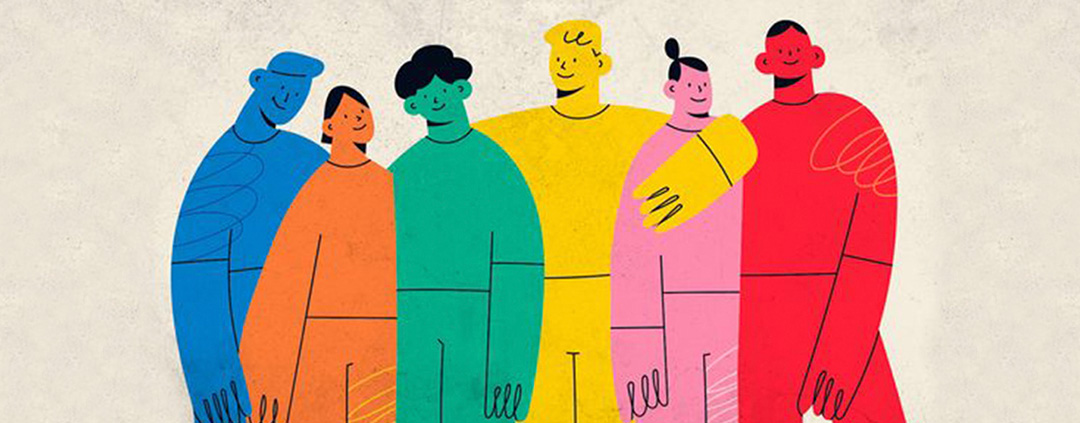
If “inclusive marketing”
is still somewhat unfamiliar
The recent keyword “accessibility” has been broadly employed. Originally, “accessibility” referred to “the possibility of reaching a particular place from another location.” While it was predominantly used in the context of transportation facilities in the past, now, it frequently connotes non-discriminatory services, with terms such as “web accessibility,” “disabled accessibility,” and “elderly accessibility.” We introduce industry-specific examples of inclusive marketing that consider accessibility for all.
1. Media for Everyone
KakaoTalk, a messenger app utilized by 48 million users, is making strides to enhance accessibility so that it remains user-friendly for the elderly and those with low vision. It's possible to adjust text size and set high-contrast themes within the application system.

Source: Kakao, Netflix webpage
“Alternative text” is a feature that verbally explains content's meaning and purpose for the visually impaired. In the past, when someone sent an emoticon, a voice prompt merely stated, “Kakao emoticon, 12:21 PM,” making it challenging to grasp the context fully.
The alternative text provides guidance like “working, computer, bear, animated emoticon, 12:21 PM,” enabling the recipient to understand the message's meaning and sentiment.
Netflix offers audio descriptions and closed captions. It's a technology designed to assist subscribers with visual or hearing impairments to experience content in real time. Rather than hearing about the content from someone who's already watched it, they can directly enjoy it for themselves.

Source: Netflix Screenshot
The screen narration feature elaborates on facial expressions, movements, scene transitions, and more. For example, when watching “Squid Game,” selecting the “Korean - Voice Description” option results in explanations such as “A grade-schooler, approximately first or second grade, named Gi-hun is seen in black and white tying his shoe laces.” Moreover, closed captions provide detailed information about dialogues and various sound effects in the content. This enhances deeper engagement and immersion into the story's flow and content.
Even non-disabled individuals can utilize these technologies in various situations. Whether they're on the move, post-eye surgery, unable to view the screen, or conversely can view but find it challenging to hear, the media encompasses us all.
2. Tech for All
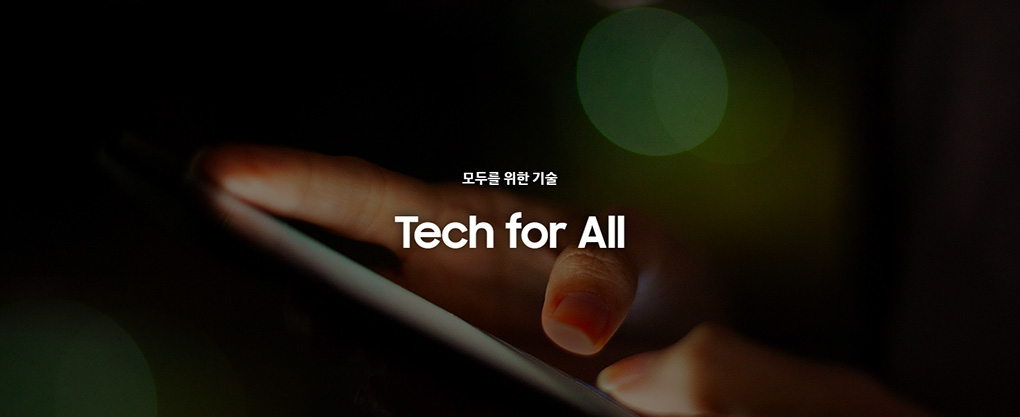
Source: Samsung Electronics webpage
Samsung Electronics is committed to offering products and services that transcend convenience, embracing diverse conditions and environments to ensure every customer enjoys an enhanced digital life. Rather than favoring a specific group, it champions convenience for all customers.
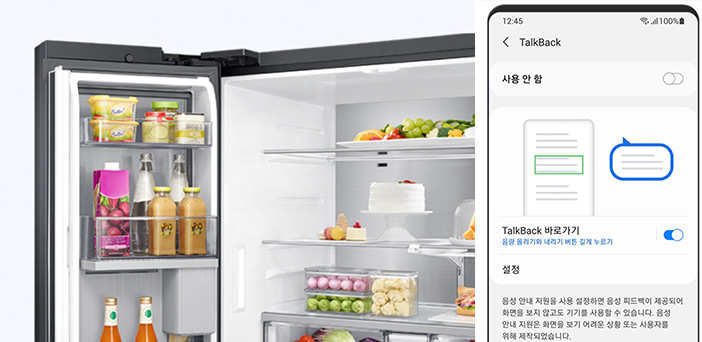
Source: Samsung Electronics webpage
A very intuitive example: traditionally, when a refrigerator door was left open for an extended period, it emitted a beeping sound. Now, users can opt for a flashing light as a visual cue. Further innovations include detecting designated sounds, sending alerts upon seeing fire alarms or a baby's cries, and underlining a commitment to convenience for all.
Moreover, by focusing on categories such as vision, hearing, movement, and cognition, Samsung has elevated the accessibility of its products, embodying inclusivity for a broader audience. True accessibility doesn't merely cater to a specific group; it contemplates the experiences of everyone. It might be time for us to ponder whether the word “everyone” we commonly use genuinely includes everyone.
3. Beauty for All
Firstly, the “D&I Beauty Communication Guide.” Communication serves as the initial touchpoint between a corporation and its customers, often reflecting the face of the company. Meticulously crafted communication that considers the distinct attributes of the customer amplifies the elegance of products and services. On the contrary, websites, advertisements, or campaigns that employ linguistically insensitive expressions or images may inadvertently distress someone.
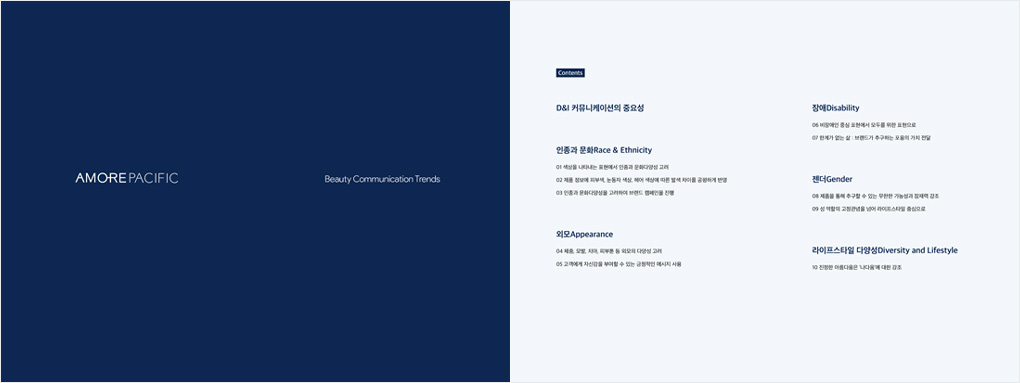
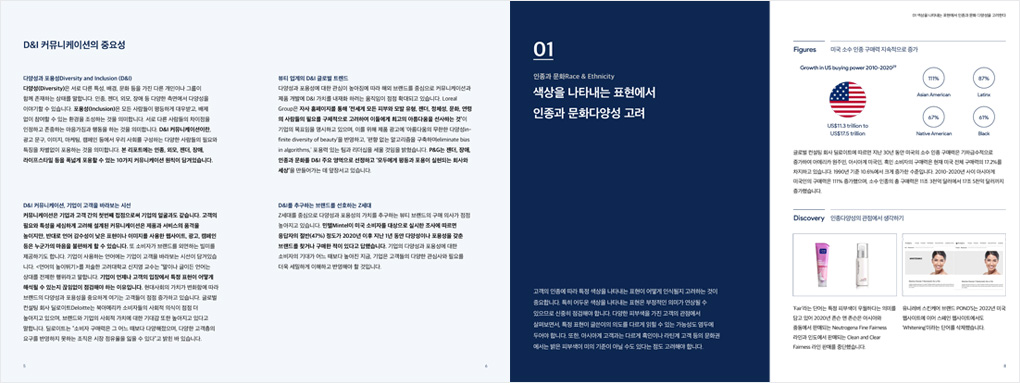
Source: Amorepacific D&I Guidelines
The guide was crafted in alignment with five categories: racial and cultural diversity, physical appearance, disability, gender, and lifestyle.
With society's sensitivity to diversity and inclusivity rising, corporate communication blunders are becoming increasingly frequent. A global brand faced legal accusations in China when its advertisement seemed to mock the appearance of eyes, hinting at racial prejudice. Another beauty brand, having named a highlighter after a geisha, halted sales amid backlash for appropriating a culture without authentic understanding.
Corporations must assess how specific expressions might be interpreted by consumers. In this context, Amorepacific plans to distribute the guide internally in October, offering training on creating advertising, imagery, and marketing that genuinely includes the varied characteristics of our society's constituents. Communication that isn't merely assumed as understood but communication that refrains from discomforting any individual is what's anticipated.
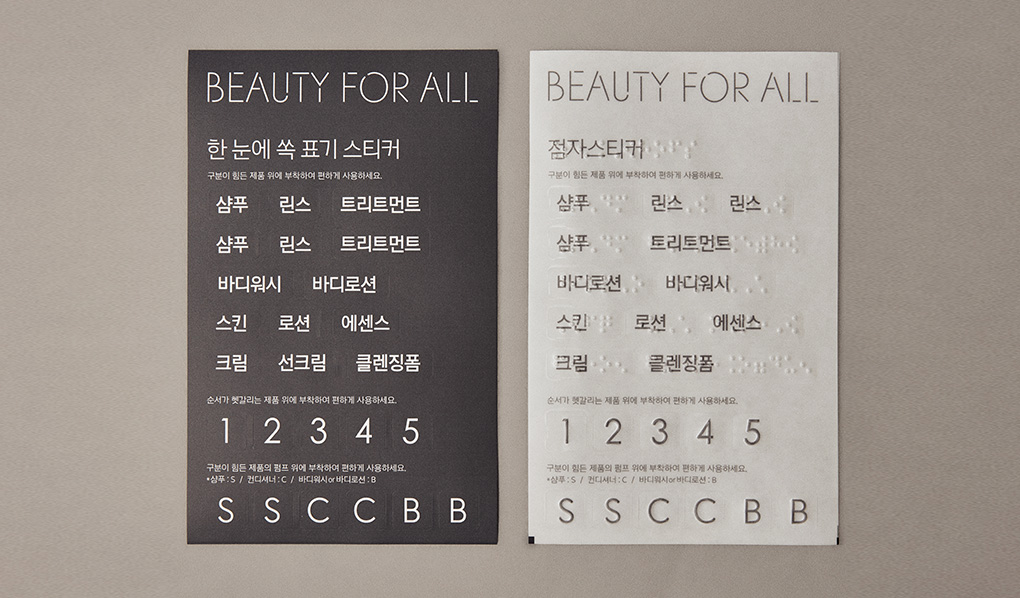
Source: Amorepacific Braille & High-Visibility Sticker
Next up is the “Braille & High-Visibility Sticker.” These stickers, designed to aid the visually impaired and those with low vision, are added to existing products. They are either gifted as promotional items or freely distributed to various institutions. The preparatory phase for these stickers was meaningful. An advisory group was formed in collaboration with visually impaired employees from ‘Raon’ located on the fifth floor of the global headquarters. Four advisory members actively voiced concerns and opinions based on their product use experiences, meticulously providing feedback with every sticker sample iteration.
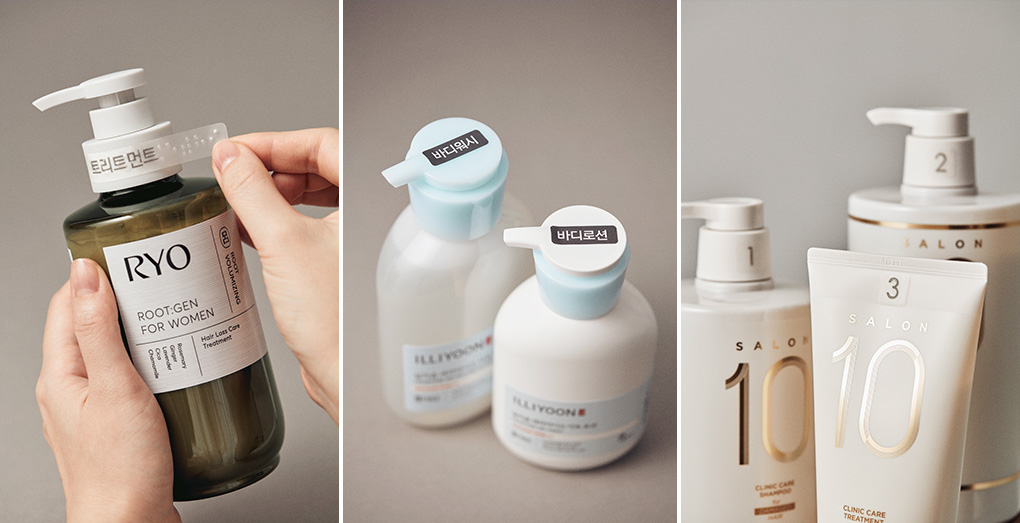
The stickers comprise braille text, product names with enhanced color contrast, and numerical indicators for usage sequence.
In reality, fewer than 10% of the visually impaired in our country can read Braille. This sparked sincere deliberations on increasing accessibility, leading to the addition of simple alphabetical ‘initials’ and ‘numbers’ to indicate the order of use. Further developments, crafted alongside the advisory group, include products featuring raised symbols directly on them. It's our hope that more customers, through their daily product experiences, discover their unique beauty.
#Anticipating
Inclusive Marketing
Rather than merely approaching the socially disadvantaged with a sense of charity, if we can genuinely recognize them as naturally falling within the ‘us’ category, our considerations of accessibility in product development and communication will surpass mere compliance or obligation. When we envision a broader ‘us’ and predicate our actions on ‘everyone,’ won’t we genuinely connect with a wider clientele?
-
Like
0 -
Recommend
0 -
Thumbs up
0 -
Supporting
0 -
Want follow-up article
0
Array ( )





